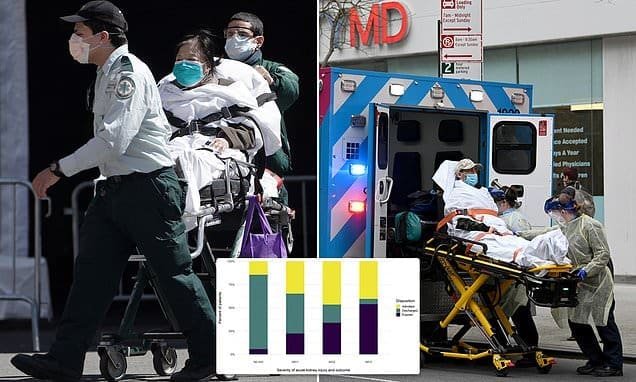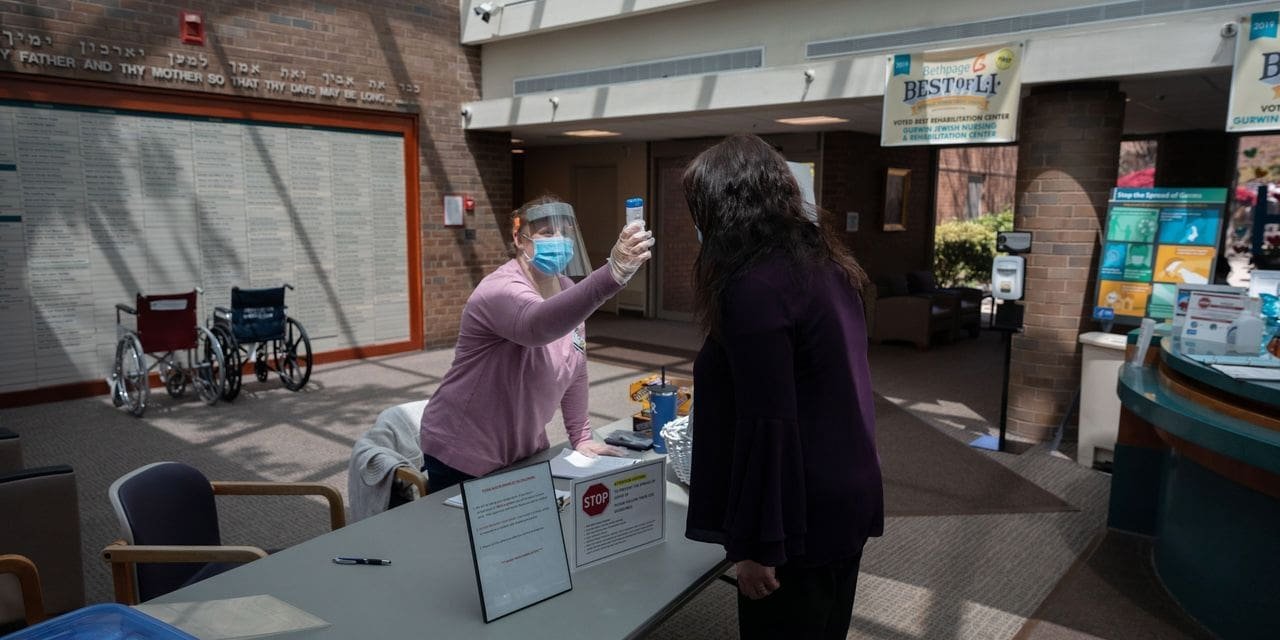Virus-stricken children threaten world’s ability to reopen
Children with COVID-19 threaten recovery from the pandemic — sparking increased scrutiny of their cases from scientists and policy makers seeking clues about the new coronavirus’ spread and virulence.
While infections of those under 18 compose a small portion of the worldwide total, they number in the thousands, and in recent days have become the subject of a National Institutes of Health study. There have also been reports in the U.S., UK and Europe of a mysterious condition among children.
In Italy, one model being used to guide recovery decisions has underscored the danger presented by children, who often show no symptoms and have many more daily social contacts than adults. It predicts that opening schools alone would blow out the reproduction factor — known as R0 and pronounced R naught — to around 1.3, above its current level below 1, which is needed to curb the outbreak.
“Opening the schools is a solution that’s absolutely worrying,” said Stefano Merler, a researcher at the Trento-based Fondazione Bruno Kessler who built the models with Italy’s Superior Institute of Health. “It would bring very serious problems in a very short time,” he said at an April 30 briefing.
By contrast, opening only businesses would keep the level below 1, according to the model. An R0 rate of 1 means that for every person infected, another contracts the virus; a rate less than 1 implies the pandemic is shrinking.
But more than just being vectors of infection, children around the globe have been sickened by, and in some cases died from, COVID-19.
While their numbers pale compared with the tens of thousands of dead elderly people, there are now enough children with COVID-19 that hospitals have dedicated spaces for them — including in Milan, near Rome, and in New York state, where three children age 9 and under have died, and eight of them age 10 through 19.
Italy has counted 1,478 children age 9 and younger as infected, according to government data through April 28. Three had died as of May 6, including at least one boy and one girl, according to figures released today.
Rome’s Bambino Gesu pediatric hospital, which has set up an isolated COVID-19 ward at a satellite facility outside the city center, last week had two children in intensive care, of a total 16 coronavirus patients. They included four mothers, according to Corriere della Sera newspaper.
As governments around the globe weigh reopening economies — along with their schools — the new research points to a risk that virus transmission via children could worsen the pandemic.
One such study, from Germany, found that children with the new coronavirus may be as infectious as adults, and recommended caution against unlimited school openings.
The New England Journal of Medicine on May 1 published a study of Italian children with COVID-19 that showed more than half contracted the disease outside their families or from unknown sources, and hypothesized that this was the result of Italy’s not locking down sooner.
Other researchers have questioned how much children can spread the virus. A recent analysis of global studies compiled by the Don’t Forget the Bubbles pediatric blog found limited evidence that children pass the disease to others in significant numbers.
Read also: Are children forgotten in the response to the pandemic?
NIH tracking
The National Institutes of Health said Monday that U.S. researchers will track children from 2,000 families to learn how the virus is transmitted and determine what percentage of those infected show symptoms.
And in the UK, Spain, Italy and US, health authorities and doctors are warning of a growing number of children with a “multi-system inflammatory state” that could be linked to the coronavirus.
At a news conference Friday, New York Governor Andrew Cuomo said it’s a new cause of concern, with 73 cases of the severe illness in children, challenging previously held assumptions that they were largely immune. A 5-year-old died in New York City from COVID-related complications, and the state is investigating other deaths, Cuomo said.
“This would be really painful news, and would open up an entirely different chapter,” he said.
Among children with COVID-19, the youngest have borne a disproportionate burden. In Italy, those 1 year old and under compose 37 percent of the 134 coronavirus hospitalizations of children through April 28.
One family’s ordeal
Among the reported 49 babies hospitalized in Italy was a 2-month-old from a small town south of Milan.
Her ordeal began March 15, a Sunday, when she ran a high temperature and was vomiting, according to her mother, Francesca, 37, who asked that her surname not be published to protect medical privacy.
Francesca drove the two of them to a Milan hospital that specializes in infants, not knowing it would be the last time they would see the baby’s father and two older siblings for three weeks. She had with her only a few diapers, a phone charger and her purse. At worst, she suspected bronchitis, and says she had no idea babies could contract COVID-19.
Doctors, however, had a hunch and isolated the two, testing mother and daughter. The next morning, Francesca learned from a phone call to the room that they each had the novel coronavirus.
“I had a panic attack,” she said. “I thought I’d die or the baby wouldn’t make it. I prayed it would be me, not her. ”
The local hospital transferred Francesca and her daughter to the pediatric ward of Milan’s Sacco hospital, which has more than 15 beds, five of which are for infective isolation, and one isolation room for babies.
In a room of their own, the duo were each other’s only company as they fought the virus. Their conditions never turned serious enough to require invasive procedures or machines to assist breathing. But their isolation — and doctors and nurses who entered only in full protective gear — meant they didn’t see another human face the entire time.
Even after they recovered from the COVID-19 symptoms, Francesca and her daughter had to wait days until they both tested negative before they could go home, on April 6.
“The day we got out, and I finally saw the face of the ward’s doctor, I started crying,” Francesca said.
Back at home, however, there are still lingering questions about her two other children’s health — and by extension the rest of Italy’s — as the country heads toward a slow reopening: Despite her hospitalization, the other members of her family, having never shown symptoms, have been unable to get a coronavirus test.
–With assistance from Keshia Clukey, Andrew Davis and Stacie Sherman.
Your premium period will expire in 0 day(s)
close x






Recent Comments